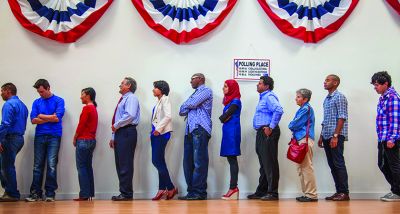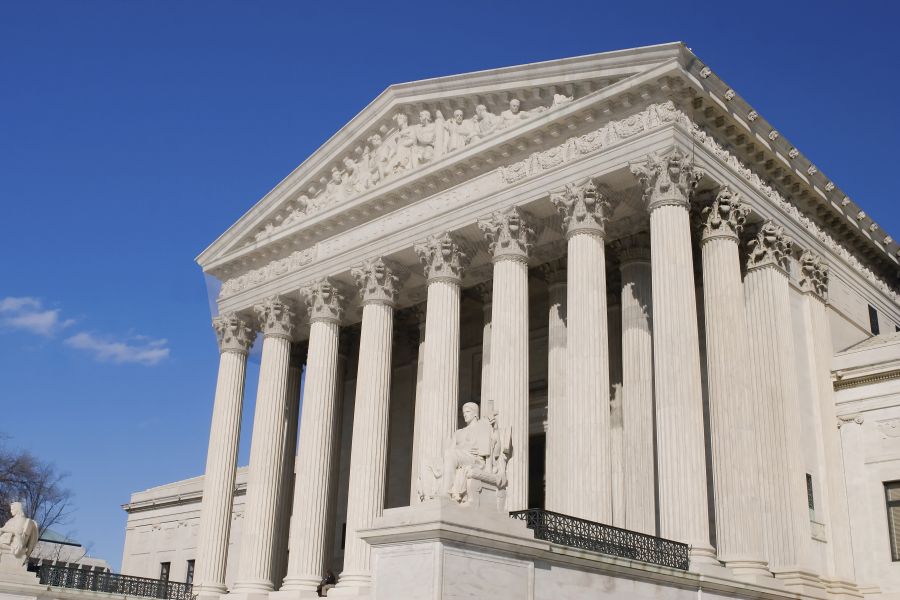You have a right to speak, assemble, petition — so now, register to vote
First Five by the Freedom Forum Institute
Sep 24, 2020

Today is National Voter Registration Day — an election-year effort since 2012 to encourage all of us to vote.
Ironically, the idea of voter registration started with the opposite idea in mind: Creation of a system to deny voting to certain people, such as recent immigrants, Blacks and even those just deemed low-income.
The registration system — actually “systems,” since each state controls how its voters register — also has been used to spur participation: The Voting Rights Act of 1965 voided a number of Southern states’ Jim Crow discriminatory practices, such as requiring prospective Black voters to state exactly, “How many bubbles are there in a bar of soap?” or to name obscure federal office holders.
Mail-in and “motor-voter” provisions made it easier to register, or extensions of the time period to qualify overwhelmed occasional attempts to exclude groups of poorer working people who often were not at home when registrars visited.
In 1993, President Clinton signed the National Voter Registration Act, which mandated that states allow citizens to register to vote by mail, at motor vehicle/licensing branches or local public offices. More than 9 million new voters registered once the act took effect in 1995, according to Alexander Keyssar’s in “The Right to Vote: The Contested History of Democracy in the United States,” published in 2000.
If you need information on where to register for the upcoming elections on Nov. 3, www.NationalVoterRegistrationDay.org provides a list of events and resources nationwide and online that can help. The organization says nearly 3 million Americans in the last eight years have used the day to register and it expects to exceed the record participation of 2018, when more than 800,000 signed up on National Voter Registration Day.
Voting and being able to register to vote seem obvious extensions of First Amendment rights. Of what ultimate good are the rights to freely think, speak and write, gather and seek change in our government if we are unable to participate in the actual decision about the people who carry out its policies?
Still, as my colleague Lata Nott observed in a First Five column in February, “The First Amendment protects so many activities that are adjacent to voting — spending money to influence voters, expressing political views near polling stations, signing petitions to put initiatives on a ballot — but stops short of voting itself.”
At the time the column was written, courts were deep into battles over gerrymandered districts aimed at splitting certain voter groups into differing districts to dilute those groups’ influence. It also was clear that voter registration would be another contentious issue during a primary season extended, due to COVID-19 delays and measures, well into summer. Now, mail-in voting is the subject of presidential attacks, as largely Republican state leaders defend limits on certain registration efforts seen as more favorable to likely Democratic voters.
To the disappointment of some, the U.S. Supreme Court has not risen as the champion of registration and voter rights, either directly under the First Amendment or through the 14th Amendment’s guarantee of due process for all. (The 15th Amendment does make it clear that racial discrimination in registration and voting is illegal.)
The high court generally uses a doctrine called “strict scrutiny” in deciding most election-related amendment cases such as restrictions on campaign finance and even the wearing of election-related T-shirts in polling places. But it has used a lesser standard in direct registration and voting cases, allowing authorities to offer so-called “compelling public interest” arguments — sometimes accepting unsupported claims of potential registration and/or voter fraud — in deferring to those officials on restrictive state laws.
Writing on the Pacific Standard blog, author Noah Berlatsky notes “in 2013, the Supreme Court invalidated key sections of the Voting Rights Act of 1965, making it possible for Southern states to pass restrictive voter ID laws and erect other barriers … In 2016, Wisconsin's strict voter ID law prevented many poor and marginalized people from voting … (and) just before 2018 mid-terms, the Supreme Court upheld a law in North Dakota that required voters to provide a residential street address — effectively disenfranchising many Native American voters on reservations, who often don't have street addresses.”
Still, efforts like National Voter Registration Day are buttressed by dozens of national state and local “get-out-the-vote” campaigns, ranging from ongoing work by the League of Women Voters and the NAACP to more partisan efforts by both major parties to independent groups such as Rock the Vote and ServiceVote Challenge. Most are available online.
The inherent values of voting and being registered to vote have been hailed since the nation’s early days. Alexis de Tocqueville’s “Democracy in America,” first published in 1835, had great hopes for American democracy to succeed, based on a principle of constitutionally protected independent thinking and actions and what he called “the reconciliation of personal interests and the public good.”
Starting with our First Amendment freedoms, the nation’s founders devised a system on the free exchange of views to create an informed body of citizens, who then could exercise self-governance through the process of elections.
Registering to vote is the first step in that reconciliation of measuring our individual views and needs against the overall needs of our society. Voting on Nov. 3 is the next step — the ultimate expression of our First Amendment right “of the people peaceably to assemble, and to petition the government for a redress of grievances.”
So don’t let Tocqueville — or your fellow citizens and democracy — down. Register. Vote.










